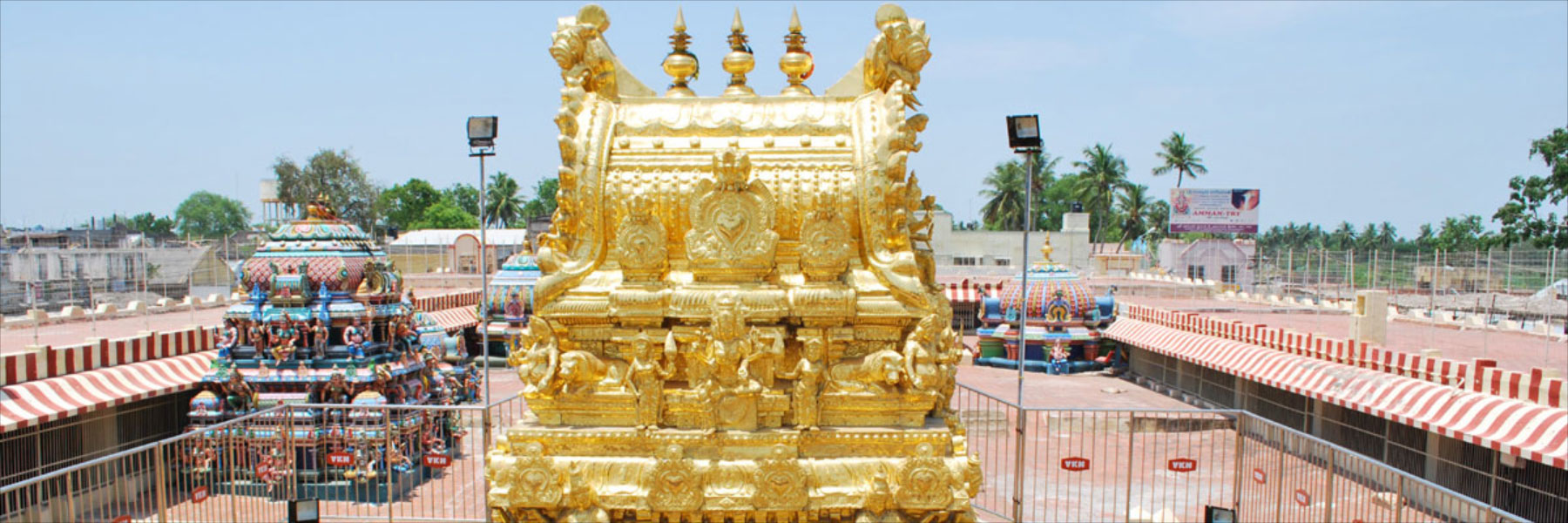
Sorry, we couldn't find anything that matches your search.
Destination

Famous Places to Explore in Hyderabad
A vibrant city with the imposing...

Raipur Tourist Places | Best Place to Visit
The stronghold of several erstwhile...

Ahmedabad
Declared as India's first UNESCO World...
#
Thiruvanaikaval
Also known as Thiruvanaikoil, Thiruvanaikaval, a stone’s throw from the city, is home to the Jambukeswarar-Akilandeswari Temple. Dedicated to Lord Shiva, the temple is one of the panchabhoota sthalam (shrines representing one of the five elements of nature) and represents water. Legend has it that once an elephant worshipped a shivling under a Jambu tree by cleaning it with water from its trunk and thus got the name of Jambukeswara. The shivling is reportedly submerged in water flowing from a spring into the sanctum. The temple is similar in architecture to the Sri Ranganatha Swamy Temple with concentric rectangular enclosures housing various deities. The Jambukeswarar Temple is defined by five enclosures that are surrounded by a 25-ft-high wall, marking the temple's precinct.

Samayapuram
The pilgrim town of Samayapuram is located on the outskirts of Tiruchirappalli. The town has developed around Samayapuram Mariamman Temple, which is dedicated to Goddess Mariamman. Legend has it that the present-day temple was constructed by King Vijayaraya Chakkaravarthi during the 18th century. Goddess Mariamman is known to cure diseases and is revered as the Goddess of fertility. Hundreds of devotees throng the temple on Sundays, Tuesdays and Fridays to offer their respects to the goddess. Held in April-May every year at the temple is the famous Chithirai Car Festival. During the 11-day event, which has been celebrated annually for almost six-centuries, thousands flock here to witness the procession of the temple's deity through the town. It is indeed a spectacular sight!

Uraiyur
The spiritual town of Uraiyur is best known for the Azhagiya Manavala Perumal Temple, dedicated to Lord Vishnu. The temple is believed to have been built by the Medieval Cholas of the late 8th century AD, with contributions from the later Pandyas, Vijayanagar kings and Madurai Nayaks. It is surrounded by a granite wall enclosing all the shrines. A large number of devotees visit the temple for the annual Serthi Sevai festival observed during the months of March-April. Around 3rd century BCE when Mauryan emperor Ashoka ruled, Buddhism was quite popular in the region around Uraiyur. The town was once the capital of early Chola rulers, and among the three main kingdoms of ancient Tamil country. Inscriptions and rock edicts of Ashoka and the Satavahanas describe Uraiyur as "the citadel and centre of the Cholas".

Our Lady of Lourdes Church
Situated near Rock Fort, the Church of Our Lady of Lourdes is a prominent stopover on the tourist circuit. It is modelled after France’s Basilica of Lourdes, the world-famous place of pilgrimage in the southern fringes of the country. It’s jaw-dropping architecture resonates with fine Indian craftsmanship and draws admirers from around the world. This 19th-century church has been constructed in the neo-Gothic style of architecture and boasts striking stained glass drawings that depict various scenes from the Bible.
While the facade of the church is spectacular, its interior is also noteworthy, particularly the beautiful altar. Extensive research has revealed pen-and-ink plates describing how the construction was completed to reflect both Gothic and Indian designs that would be best suited for this iconic church.

Srirangam
Located in the periphery of Tiruchirappalli, is the river island town of Srirangam. The town is flanked by the Cauvery river on one side, and its tributary Kollidam on the other. The town is widely known for the ancient and grandiose Sri Ranganatha Swamy Temple. Of the 600 acres across which the town is spread, 156 acres house the temple complex. The temple is also said to be the most important, foremost and first of the 108 main Vishnu temples (divyadesams) as well as the primary of the eight self-manifested shrines (Swayam Vyakta Kshetras) in the country. The complex has seven prakaras (enclosures), which have been formed from huge and thick rampart walls around the sanctum. The annual 21-day festival conducted during the months of December and January attracts up to one million visitors who flock to the compound to experience the festivities and pay their respects to Lord Vishnu.

Nadirshah Dargah
Located near Tiruchirappalli Fort Railway Station, the tomb of Muslim cleric Babbayya Nadir Shah stands in the Nadir Shah Dargah mosque complex. The mosque has a very attractive and colourful facade and draws devotees from around the area. It commemorates the life and times of Nadir Shah, a Muslim mystic and preacher from the Middle East, who migrated to Tamil Nadu in the 11th century, where he travelled from area to area to preach the faith of Islam to the locals. The entire area is specially decorated during the first 17 days of Ramadan to honour Babbayya Nadir Shah as he is believed to have passed away on the 15th day of the holy month of Ramadan. A special Urs Mela is also celebrated to mark the date and is attended by hundreds of devotees, who flock to the dargah to pay their respects.







